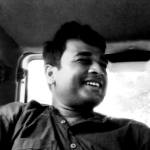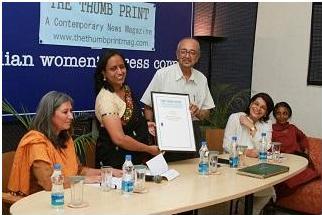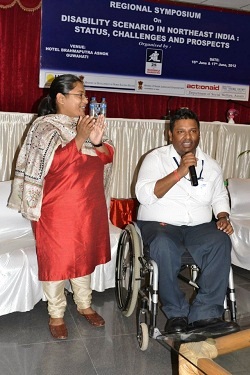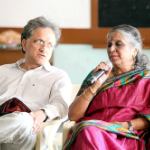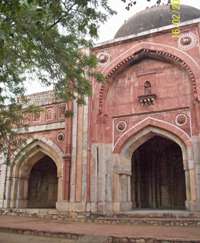Under most tragic circumstances, a family committed suicide by jumping into the mighty Brahmaputra river in Guwahati. Local media reported that the family consisted of a couple and their 10-month-old daughter. It is also reported that the child was suffering from a congenital heart disease. Doctor informed the parents that her treatment will not be possible in Assam, hence, will need to be sent outside for surgery. The expected financial cost of the operation was not within the means of the family. Somebody also told the father that there is a scheme by Health and Family Welfare Department, Government of Assam, but he couldn’t find a way out. And thus the parents planned to eliminate the child as well as themselves. Out of desperation, they committed suicide by jumping into river Brahmaputra!
But why the family had to choose the ultimate path, despite having the provision to get their entitlement. As per the scheme initiated by the government, if a child below 14 years suffers from heart disease and the family doesn’t have an annual income more than six lakh, the state government will bear the cost of the medical expenses. The scheme says that, government will not only bear the medical expenses but will also cover the expenses incurred for accommodation and air fare of the parents as well as.
After having such robust schemes, why the family had to suicide? Why the welfare programmes are not accessible to the poor? Where the problem really lie? These are the basic question, everybody should ask themselves.
If you have recently visited the Gauhati Medical College and Hospital, you might have seen the big hoardings of RSBY (Rashtriya Swasthya Bima Yojna). Government is expending thousands of crores of rupees for this scheme. The programme is meant for the marginalised people like PBL, construction workers etc. to get the healthcare facility without paying from his/her own packet. The health insurance policy gives a sum insured amount of Rs. 30000 to cover a family of up to five members (parents and first three children) for a year. The policy is working fine in other states. But do you know what the scenario in Assam is? It’s pathetic! Till 31.08.2013 only 5065 odd people have benefited from the scheme. At the same time, in Patna, only one districts of a poor state like Bihar has benefited 21427 persons till the same period of time. A single district is getting more than four times benefit than whole state of Assam. If you look at the below table you can easily find it out that except two or three districts, there is no remarkable work done so far. The same scenario in case of construction workers also, 11 years after the enactment of Building and Other Construction Workers Act, our state government formed the required welfare board in 2007 only. But the registration rate is not more than 2%. Ultimately, the most marginalised construction workers are not getting the benefit of the Act as well as the RSBY scheme. On the other hand the collected cess for construction worker has crossed 100 crores in Assam; it will cross 500 crore by 2015. What excuse we can put forward other than political dissidence?
|
S.No. |
District |
Total Targeted Families |
Number of Beneficaries |
Amount Disbursed (Rs.) |
|
|
1 |
234962 |
29 |
157250 |
||
|
2 |
45363 |
2 |
2500 |
||
|
3 |
- |
|
** |
||
|
4 |
54728 |
22 |
92500 |
||
|
5 |
57181 |
4 |
14000 |
||
|
6 |
118132 |
- |
** |
||
|
7 |
58179 |
1660 |
5781725 |
||
|
8 |
- |
|
** |
||
|
9 |
43581 |
5 |
41000 |
||
|
10 |
61402 |
- |
* |
||
|
11 |
41932 |
74 |
380375 |
||
|
12 |
139969 |
662 |
2559150 |
||
|
13 |
120483 |
6 |
42000 |
||
|
14 |
148574 |
540 |
1224750 |
||
|
15 |
120956 |
2012 |
5002031 |
||
|
16 |
164979 |
41 |
171500 |
||
|
17 |
304556 |
- |
* |
||
|
18 |
- |
|
** |
||
|
19 |
- |
|
** |
||
|
20 |
175136 |
4 |
26000 |
||
|
21 |
252396 |
1 |
10000 |
||
|
22 |
131377 |
3 |
16000 |
||
|
|
Total |
2273886 |
5065 |
15520781 |
|
|
* Target fixed but not a single person benefited |
|||||
|
** Target not fixed |
|||||
Let me share something interesting, recently we were part of a team from Tata Institute of Social Sciences, Guwahati, to have a visit to the Mini Primary Health Centre (PHC) at Kharguli, Guwahati, as a part of our organisational visit plan. The team was headed by two professors from the institute and followed by eight post graduate students of Community Organisation and Development Practice course. While interacting with the Medical Officer some shocking revelation came to light.
The Kharguli Mini PHC is supposed to have four Medical Officers to serve 15000 population of the area. But now it is being run by only one Medical Officer and serving more 26000 people of the locality. Just imagine a PHC, which is supposed to cater 15000 people with the help of four Medical Officers is now catering more than 26000 people with the help of only one Medical Officer! Yet the Medical Officer is not only assigned to do medical practices, but she has to do huge paper works and reporting as well.
The Medical Officer doesn’t have any information about the annual development fund of the PHC.
If this the scenario of our medical infrastructure, human resource and attitude of government, how we can expect a better life expectancy, minimal maternal mortality rate or infant mortality rate or even how we can avert the suicide due to non availability of healthcare facility?
But everything is not so pessimistic; some ray of hope is being shown by some cordial effort of a few individuals and organisations. We can take the example of Centre for North East Studies and Policy Research. Professor Sanjoy Hazarika and his team at C-NES have developed the concept of boat clinic to provide healthcare facilities for the people of interior riverine (Char-Chapori) areas. Though government agency NRHM is working with C-NES, We believe that it could be speedy in penetration with more government support and also can be replicated in the plain areas as well. We should make sure that the community gets involved in any development process to get maximum benefit out of it and boat clinic is a classic example of it. The documentary made by Maulee Senapati on this project “Where There Are No Roads” is a must see documentary for every public health policy makers and practitioners as well.
In the concluding note, we would like to propagate a paradigm shift in our approach towards public health system. We need some professionals to manage the pre and post medical trauma of the patient and relatives of the patients. We can take the example of Tata Medical Centre, Kolkata, they have appointed fulltime professional social worker to look after the nitty-gritty of the patients, whereas this is a not for profit hospital! Perhaps, thus we can save the families from suicide and other fatal consequences!

